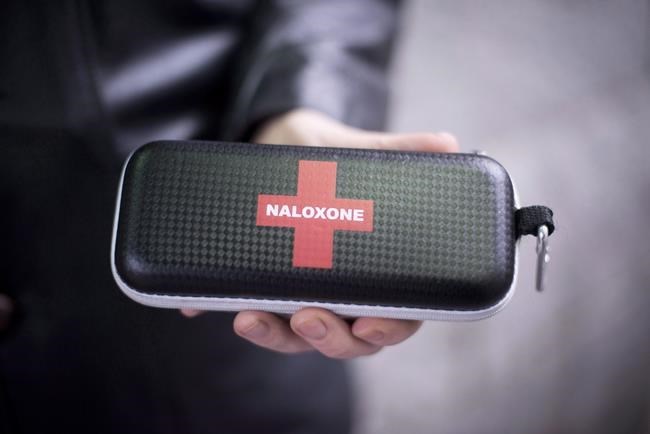TORONTO — Opioid-related deaths among teens and young adults in Ontario tripled from 2014 to 2021, while drug treatment rates significantly decreased, a new report shows.
Opioid deaths among those aged 15 to 24 surged during the first year of the pandemic to 169 deaths, up from 115 the year before, according to research led by the Ontario Drug Policy Research Network at Unity Health Toronto.
Just 37.1 per cent of teens and young adults who had an opioid use disorder and died from drugs had received any treatment in the last year of the analysis, compared to 48.6 of adults aged 25 to 44, the researchers found.
They found that rates of opioid-related emergency department visits quadrupled in that time.
The Office of the Chief Coroner for Ontario, Public Health Ontario, the Ontario Forensic Pathology Service and non-profit research institute ICES were also involved in the project that analyzed provincial health-care and demographic data from 2014 to 2021 for the 15-to 24-year-old age group.
During that time, 752 young people died, there were 711 hospitalizations and 5,401 emergency department visits.
The researchers also found that use of medications to treat opioid use disorder fell 50 per cent over those seven years and in-person residential treatment fell 73 per cent.
"It's really a stark comparison of the harms that this demographic is experiencing and how they're accessing treatment and whether the health-care services that we're providing to them are really meeting their needs," said Dr. Tara Gomes, a scientist at Unity Health Toronto who leads the Ontario Drug Policy Research Network.
Fentanyl was found in 94 per cent of those who died from opioids during the pandemic, up 10 percentage points after COVID-19 came to the province.
The researchers also found that only about half of young people who died from opioids had an opioid use disorder, which differs from the overall provincial picture. About two-thirds of all opioid-related deaths occur in those who have that disorder.
This suggests young people have more barriers to accessing treatment, Gomes said. That could be due to physicians being reticent about providing treatment such as methadone or buprenorphine to young people, she said.
Patients may also be reluctant to start a methadone regime, for instance, that requires daily trips to the pharmacy for a process that could last years, Gomes said.
"The other side of it is that we might be seeing increasing harms because teens and young adults are more likely to be using drugs occasionally," Gomes said.
"Our drug supply is incredibly unpredictable and potent, and so if you're only using drugs once in a while, then when you use them, if you are exposed to a very high dose or a drug that has multiple different substances in it, then you can be at really high risk of an overdose."
Gomes said young people are going to experiment with drugs, a reality unlikely to change.
"The unregulated supply being as dangerous as it is, I think that we should be concerned because we know that younger people are going to be accessing that supply," she said.
About one in eight young people who died from opioids were homeless, the report found.
The authors concluded a new approach is needed.
Younger peer support workers could help, Gomes said, as well as looking at treatments such as Sublocade, the injectable form of buprenorphine needed just once a month, as opposed to a daily trip to the pharmacy.
She suggested increasing harm reduction options and education, especially the value of carrying around naloxone, an opioid overdose antidote, and not using drugs alone.
"We found that about two thirds of the deaths that happened in this demographic happened within people's own homes and it was quite rare for people to actually have naloxone administered," Gomes said.
Ontario's chief coroner called the deaths of teens and young adults from opioids "heartbreaking."
"Families and friends have lost loved ones far too soon and the impact will be felt for decades," Dr. Dirk Huyer said in a statement.
"This report underlines the importance of policies that recognize the need for accessible resources, harm reduction services and mental health supports necessary to prevent further opioid-related deaths of teens and young people."
The authors called for more harm reduction options and addressing systemic problems that could be at the root of opioid use.
"Strategies that address upstream risk factors for substance-related harm are warranted, including ensuring access to stable housing, addressing food insecurity, and removing barriers to mental health treatment," the authors wrote.
This report by The Canadian Press was first published June 27, 2023.
Liam Casey, The Canadian Press



